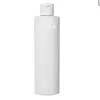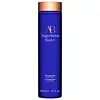What's inside
What's inside
 Key Ingredients
Key Ingredients

 Benefits
Benefits

 Concerns
Concerns

 Ingredients Side-by-side
Ingredients Side-by-side

Water
Skin ConditioningLauryl Glucoside
CleansingSodium Lauroyl Sarcosinate
CleansingCocamidopropyl Betaine
CleansingGlycerin
HumectantSodium Chloride
MaskingOleic/Linoleic/Linolenic Polyglycerides
EmollientCitric Acid
BufferingMaltodextrin
AbsorbentPanthenol
Skin ConditioningSodium Benzoate
MaskingCoco-Glucoside
CleansingHydroxypropyl Guar Hydroxypropyltrimonium Chloride
Glycol Distearate
EmollientPotassium Sorbate
PreservativeMaris Aqua
Humectant1,2-Hexanediol
Skin ConditioningCamellia Japonica Phytoplacenta Extract
AntimicrobialCaesalpinia Spinosa Fruit Pod Extract
Hydroxypropyltrimonium Hyaluronate
Laminaria Digitata Extract
Skin ProtectingHelianthus Annuus Sprout Extract
Skin ConditioningChlorella Vulgaris Extract
Skin ConditioningPortulaca Oleracea Extract
Skin ConditioningSaccharide Isomerate
HumectantLavandula Stoechas Extract
MaskingWater, Lauryl Glucoside, Sodium Lauroyl Sarcosinate, Cocamidopropyl Betaine, Glycerin, Sodium Chloride, Oleic/Linoleic/Linolenic Polyglycerides, Citric Acid, Maltodextrin, Panthenol, Sodium Benzoate, Coco-Glucoside, Hydroxypropyl Guar Hydroxypropyltrimonium Chloride, Glycol Distearate, Potassium Sorbate, Maris Aqua, 1,2-Hexanediol, Camellia Japonica Phytoplacenta Extract, Caesalpinia Spinosa Fruit Pod Extract, Hydroxypropyltrimonium Hyaluronate, Laminaria Digitata Extract, Helianthus Annuus Sprout Extract, Chlorella Vulgaris Extract, Portulaca Oleracea Extract, Saccharide Isomerate, Lavandula Stoechas Extract
Water
Skin ConditioningSodium Cocoyl Isethionate
CleansingSodium Methyl Cocoyl Taurate
CleansingDecyl Glucoside
CleansingCoco-Betaine
CleansingCoco-Glucoside
CleansingErythritol
HumectantPanthenol
Skin ConditioningSodium Chloride
MaskingGlycerin
HumectantCitric Acid
BufferingHydrolyzed Vegetable Protein
Skin ConditioningHydroxypropyl Guar Hydroxypropyltrimonium Chloride
Saccharide Isomerate
HumectantPotassium Sorbate
PreservativeSodium Benzoate
MaskingHydrolyzed Rice Protein
Skin ConditioningLepidium Meyenii Root Extract
Skin ConditioningMaltodextrin
AbsorbentAcacia Concinna Fruit Extract
Skin ConditioningMelia Azadirachta Leaf Extract
Skin ConditioningNasturtium Officinale Extract
PerfumingTropaeolum Majus Extract
AntimicrobialSodium Citrate
BufferingCamellia Sinensis Leaf Extract
AntimicrobialHydrogenated Lecithin
EmulsifyingTocopheryl Acetate
AntioxidantXanthan Gum
EmulsifyingAmber Extract
Skin ConditioningSorbic Acid
PreservativeBambusa Arundinacea Stem Extract
Skin ConditioningAlanyl Glutamine
HumectantArginine
MaskingOligopeptide-177
Phenylalanine
MaskingSisymbrium Irio Seed Oil
MaskingWater, Sodium Cocoyl Isethionate, Sodium Methyl Cocoyl Taurate, Decyl Glucoside, Coco-Betaine, Coco-Glucoside, Erythritol, Panthenol, Sodium Chloride, Glycerin, Citric Acid, Hydrolyzed Vegetable Protein, Hydroxypropyl Guar Hydroxypropyltrimonium Chloride, Saccharide Isomerate, Potassium Sorbate, Sodium Benzoate, Hydrolyzed Rice Protein, Lepidium Meyenii Root Extract, Maltodextrin, Acacia Concinna Fruit Extract, Melia Azadirachta Leaf Extract, Nasturtium Officinale Extract, Tropaeolum Majus Extract, Sodium Citrate, Camellia Sinensis Leaf Extract, Hydrogenated Lecithin, Tocopheryl Acetate, Xanthan Gum, Amber Extract, Sorbic Acid, Bambusa Arundinacea Stem Extract, Alanyl Glutamine, Arginine, Oligopeptide-177, Phenylalanine, Sisymbrium Irio Seed Oil
Ingredients Explained
These ingredients are found in both products.
Ingredients higher up in an ingredient list are typically present in a larger amount.
Citric Acid is an alpha hydroxy acid (AHA) naturally found in citrus fruits like oranges, lemons, and limes.
Like other AHAs, citric acid can exfoliate skin by breaking down the bonds that hold dead skin cells together. This helps reveal smoother and brighter skin underneath.
However, this exfoliating effect only happens at high concentrations (20%) which can be hard to find in cosmetic products.
Due to this, citric acid is usually included in small amounts as a pH adjuster. This helps keep products slightly more acidic and compatible with skin's natural pH.
In skincare formulas, citric acid can:
While it can provide some skin benefits, research shows lactic acid and glycolic acid are generally more effective and less irritating exfoliants.
Most citric acid used in skincare today is made by fermenting sugars (usually from molasses). This synthetic version is identical to the natural citrus form but easier to stabilize and use in formulations.
Read more about some other popular AHA's here:
Learn more about Citric AcidCoco-Glucoside is a surfactant, or a cleansing ingredient. It is made from glucose and coconut oil.
Surfactants help gather dirt, oil, and other pollutants from your skin to be rinsed away.
This ingredient is considered gentle and non-comedogenic. However, it may still be irritating for some.
Learn more about Coco-GlucosideGlycerin is already naturally found in your skin. It helps moisturize and protect your skin.
A study from 2016 found glycerin to be more effective as a humectant than AHAs and hyaluronic acid.
As a humectant, it helps the skin stay hydrated by pulling moisture to your skin. The low molecular weight of glycerin allows it to pull moisture into the deeper layers of your skin.
Hydrated skin improves your skin barrier; Your skin barrier helps protect against irritants and bacteria.
Glycerin has also been found to have antimicrobial and antiviral properties. Due to these properties, glycerin is often used in wound and burn treatments.
In cosmetics, glycerin is usually derived from plants such as soybean or palm. However, it can also be sourced from animals, such as tallow or animal fat.
This ingredient is organic, colorless, odorless, and non-toxic.
Glycerin is the name for this ingredient in American English. British English uses Glycerol/Glycerine.
Learn more about GlycerinWe don't have a description for Hydroxypropyl Guar Hydroxypropyltrimonium Chloride yet.
Maltodextrin is a polysaccharide. It is derived from starch such as rice, corn, wheat, or potato starch.
In food, Maltodextrin is used to improve the texture and thicken a product. Due to its structure, it can help create a gel texture. As an emulsion stabilizer, it helps keep the ingredients in a product together.
As a polysaccharide, Maltodextrin has moisturizing properties. Polysaccharides are a type of carbohydrate. The top layer of skin uses polysaccharides to retain water, keeping the skin hydrated.
Maltodextrin is water soluble and has a sweet taste.
Learn more about MaltodextrinPanthenol is a common ingredient that helps hydrate and soothe the skin. It is found naturally in our skin and hair.
There are two forms of panthenol: D and L.
D-panthenol is also known as dexpanthenol. Most cosmetics use dexpanthenol or a mixture of D and L-panthenol.
Panthenol is famous due to its ability to go deeper into the skin's layers. Using this ingredient has numerous pros (and no cons):
Like hyaluronic acid, panthenol is a humectant. Humectants are able to bind and hold large amounts of water to keep skin hydrated.
This ingredient works well for wound healing. It works by increasing tissue in the wound and helps close open wounds.
Once oxidized, panthenol converts to pantothenic acid. Panthothenic acid is found in all living cells.
This ingredient is also referred to as pro-vitamin B5.
Learn more about PanthenolPotassium Sorbate is a preservative used to prevent yeast and mold in products. It is commonly found in both cosmetic and food products.
This ingredient comes from potassium salt derived from sorbic acid. Sorbic acid is a natural antibiotic and effective against fungus.
Both potassium sorbate and sorbic acid can be found in baked goods, cheeses, dried meats, dried fruit, ice cream, pickles, wine, yogurt, and more.
You'll often find this ingredient used with other preservatives.
Learn more about Potassium SorbateSaccharide Isomerate comes from sugars found in corn. It is a skin hydrator.
The structure of this ingredient can be altered to be more similar to the carbohydrates found in our skin. This ability to mimic our skin gives it hydrating properties.
Specifically, saccharide Isomerate is a humectant. Humectants draw moisture from the air to our skin.
Research shows Saccharide Isomerate to be an effective moisturizer.
Learn more about Saccharide IsomerateSodium Benzoate is a preservative. It's used in both cosmetic and food products to inhibit the growth of mold and bacteria. It is typically produced synthetically.
Both the US FDA and EU Health Committee have approved the use of sodium benzoate. In the US, levels of 0.1% (of the total product) are allowed.
Sodium benzoate works as a preservative by inhibiting the growth of bacteria inside of cells. It prevents the cell from fermenting a type of sugar using an enzyme called phosphofructokinase.
It is the salt of benzoic acid. Foods containing sodium benzoate include soda, salad dressings, condiments, fruit juices, wines, and snack foods.
Studies for using ascorbic acid and sodium benzoate in cosmetics are lacking, especially in skincare routines with multiple steps.
We always recommend speaking with a professional, such as a dermatologist, if you have any concerns.
Learn more about Sodium BenzoateChances are, you eat sodium chloride every day. Sodium Chloride is also known as table salt.
This ingredient has many purposes in skincare: thickener, emulsifier, and exfoliator.
You'll most likely find this ingredient in cleansers where it is used to create a gel-like texture. As an emulsifier, it also prevents ingredients from separating.
There is much debate on whether this ingredient is comedogenic. The short answer - comedogenic ratings don't tell the whole story. Learn more about comegodenic ratings here.
The concensus about this ingredient causing acne seems to be divided. Research is needed to understand if this ingredient does cause acne.
Scrubs may use salt as the primary exfoliating ingredient.
Learn more about Sodium ChlorideWater. It's the most common cosmetic ingredient of all. You'll usually see it at the top of ingredient lists, meaning that it makes up the largest part of the product.
So why is it so popular? Water most often acts as a solvent - this means that it helps dissolve other ingredients into the formulation.
You'll also recognize water as that liquid we all need to stay alive. If you see this, drink a glass of water. Stay hydrated!
Learn more about Water